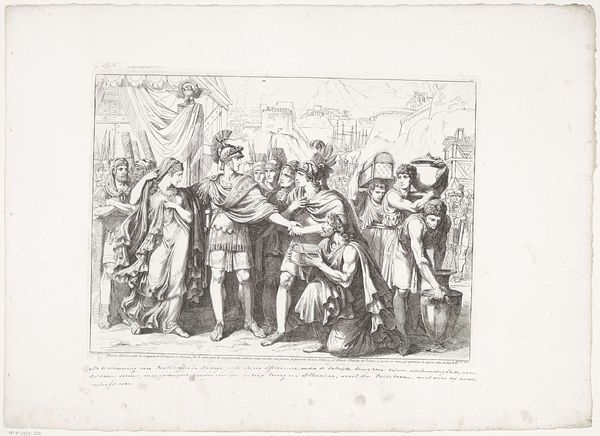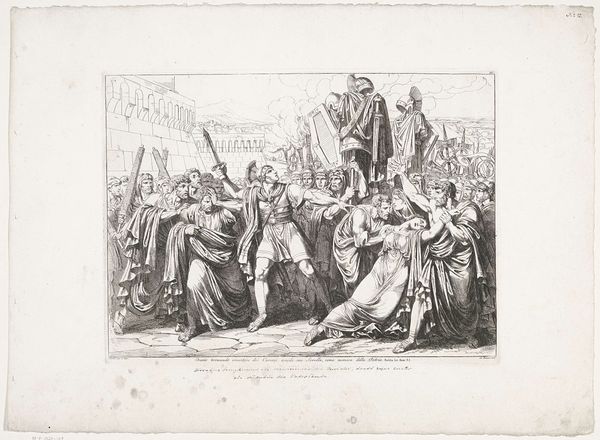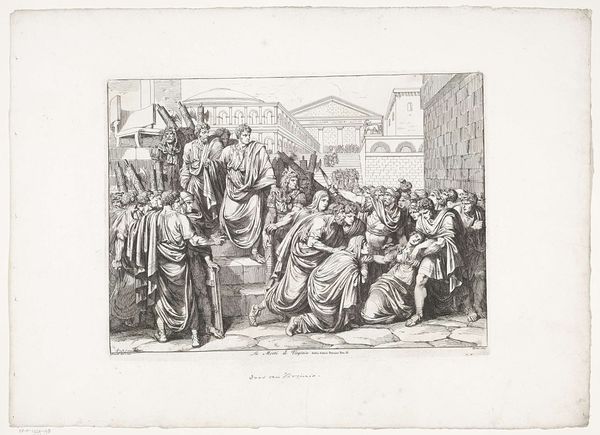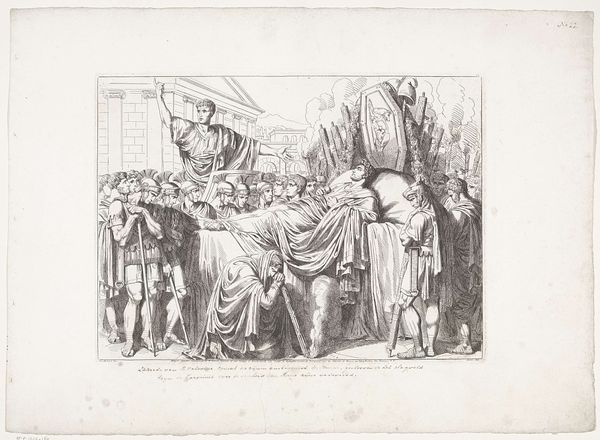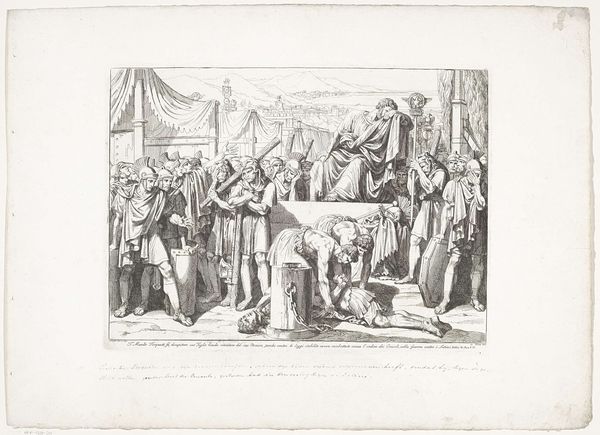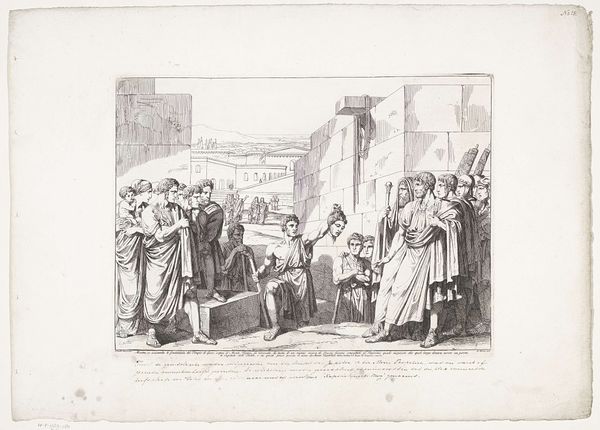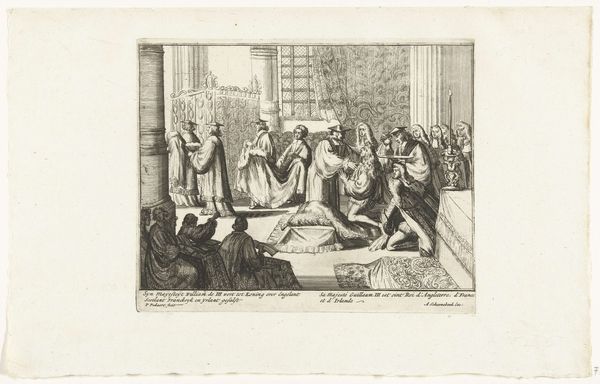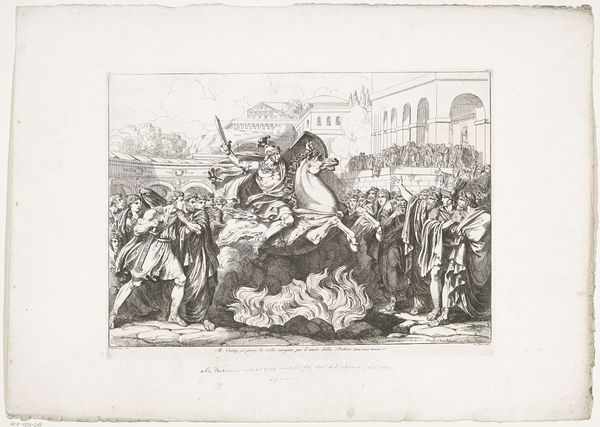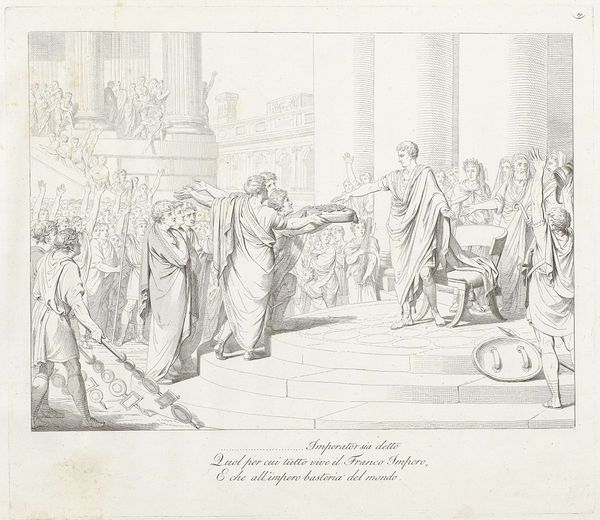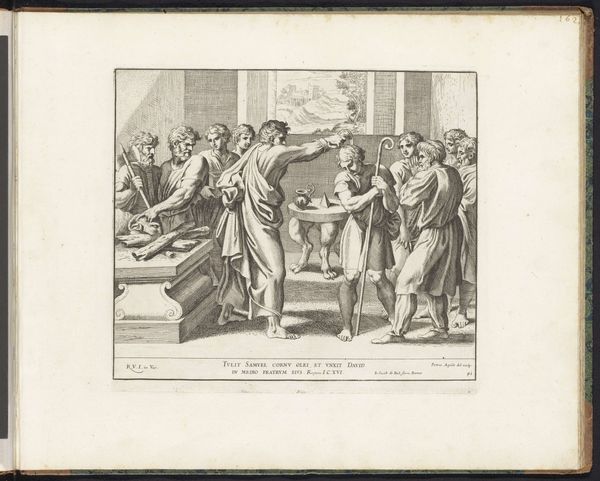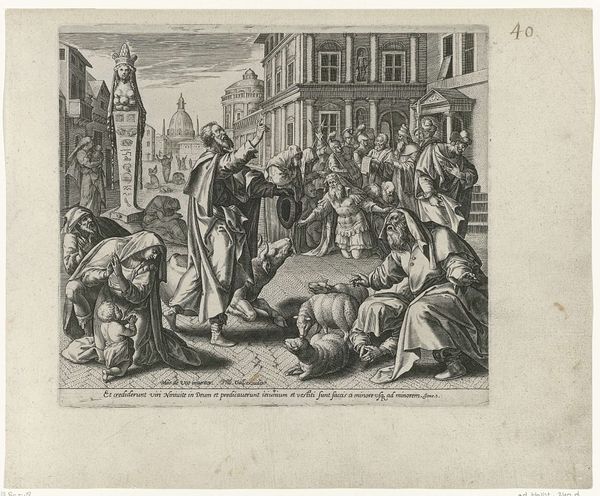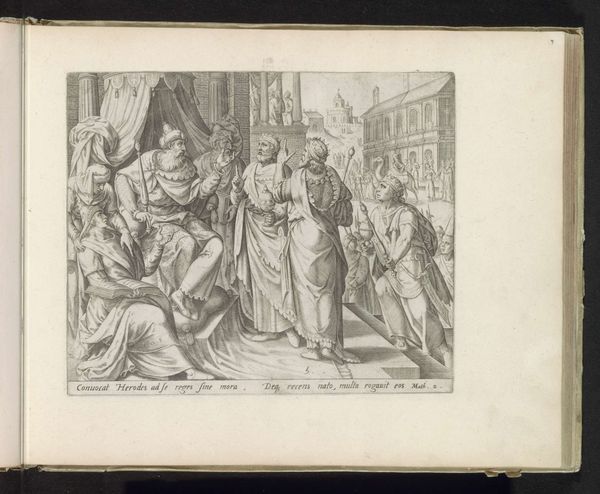
print, engraving
#
portrait
#
neoclacissism
# print
#
figuration
#
history-painting
#
engraving
Dimensions: height 314 mm, width 432 mm
Copyright: Rijks Museum: Open Domain
Curator: This engraving, "Marcus Atilius Regulus vertrekt naar Carthago" by Bartolomeo Pinelli, was created in 1817, utilizing an engraving technique. The figures seem frozen in their grief. How do you interpret this scene? Editor: Well, seeing that this is a print, it really makes me consider the labour that went into its production and its place within a wider system of image-making at the time. It's so detailed! Curator: Exactly! The choice of engraving, a painstaking process, emphasizes the value placed on skilled labor. It's a far cry from the mass-produced imagery we're used to today. Considering the depicted scene involves Regulus's departure for Carthage – essentially facing possible death – the method mirrors his sacrifice through the engraver's dedication to their craft. Don't you agree? Editor: That's interesting. So, the act of creating this image by hand—the meticulous cuts in the plate—resonates with the self-sacrifice of Regulus himself? But isn’t it just a more affordable medium compared to painting for the middle classes? Is Pinelli emphasizing accessibility through the reproducible medium of printmaking? Curator: An excellent point! The relatively accessible nature of prints expanded viewership and democratized the story, allowing wider audiences to consume narratives of Roman virtue. It also prompts consideration on the labor involved in making the story accessible and how this shapes its value, perhaps more so than a painting reserved for a private collection. Does it make you consider how stories were disseminated at that time, and by whom? Editor: Definitely. I’m realizing I need to look at the medium itself, this engraving, and its cultural context in order to better understand Pinelli’s narrative. It makes me think of the contemporary prints and posters during the French Revolution.
Comments
No comments
Be the first to comment and join the conversation on the ultimate creative platform.
